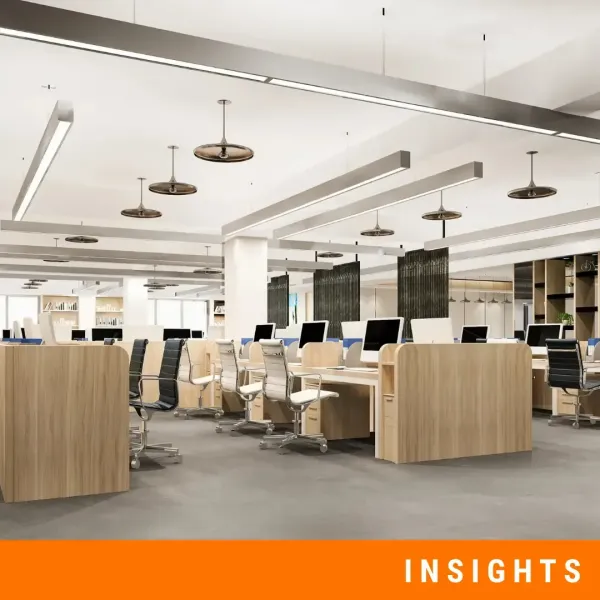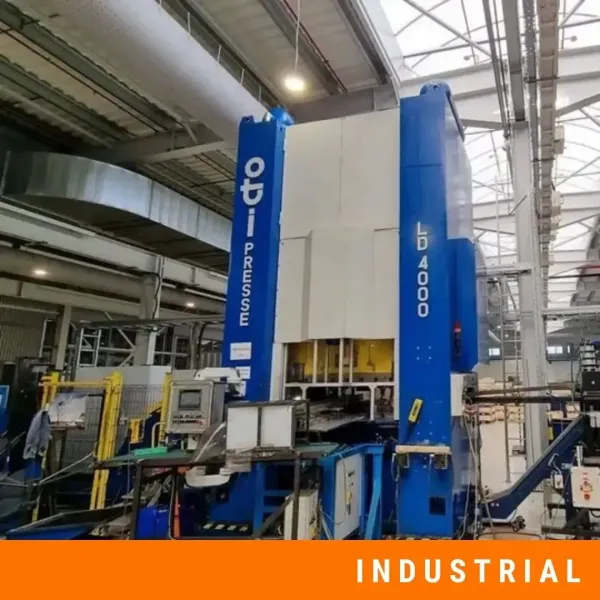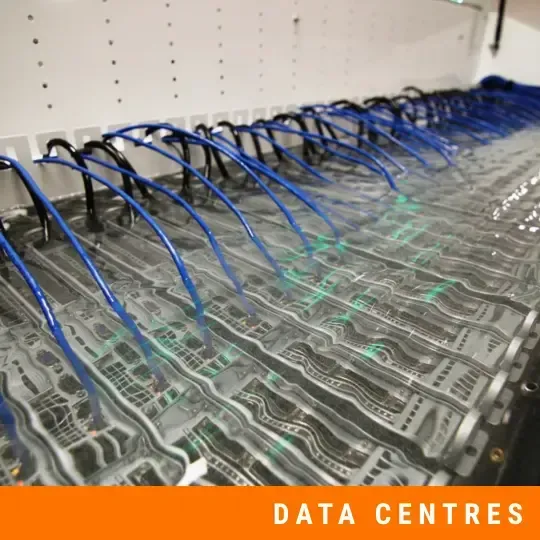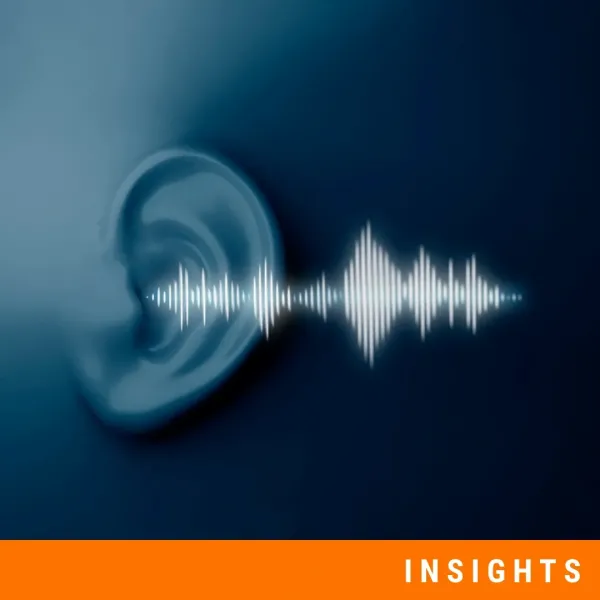Modern Audiometric Booths: Smart Design and Precision Diagnostics
In the beginning, there was silence. At least in the world of audiology. Diagnostic accuracy demands rigorously engineered acoustics and noise control. The measuring equipment is so sensitive that even the ticking of a wristwatch can influence the readings from clinical tests like audiograms and otoacoustic emissions. The latter is the very faint sound that the hair cells in our inner ear produce. That sensitive.
Audiometric booths need to provide a controlled acoustic environment. That is a given. The question is, can the technology behind them evolve as healthcare expands into different areas?
The Role of Audiometric Booths in Modern Diagnostics
Audiometric booths are designed to keep background noise extremely low, usually below 25 dB. About as quiet as a whisper. This ensures that hearing tests are not affected by outside sounds, especially in the frequency range where most speech and hearing problems are measured (125 Hz to 8,000 Hz).
Why do Tests Demand Accuracy
Audiometric booths serve as the foundation for a range of clinical tests. Without them, proper diagnosis would be too obscure and left to interpretations. Something that does not constitute stable health. Medical issues need understanding to be treated successfully.
- Pure-tone audiometry (air and bone conduction thresholds): This test measures the quietest sounds a person can hear at different frequencies. Air conduction checks the full hearing pathway, while bone conduction isolates the inner ear to detect where a hearing issue might be occurring.
- Speech audiometry and speech-in-noise tests: How well someone understands speech, both in quiet environments and with background noise. These tests are essential for evaluating the actual hearing ability.
- Otoacoustic emissions (OAE) testing: Checks whether the inner ear is functioning properly. It’s commonly used for newborn hearing screening and doesn’t require active participation from the patient.
- Auditory brainstem response (ABR) testing: Detects electrical activity in the brain in response to sounds. It's crucial for diagnosing neurological hearing issues or testing infants and non-verbal patients.
Put plainly, none of those tests would be possible without silent audiometric booths. Even the lowest of the low hums, from let's say an AC unit, can disturb the accuracy of the measurements.
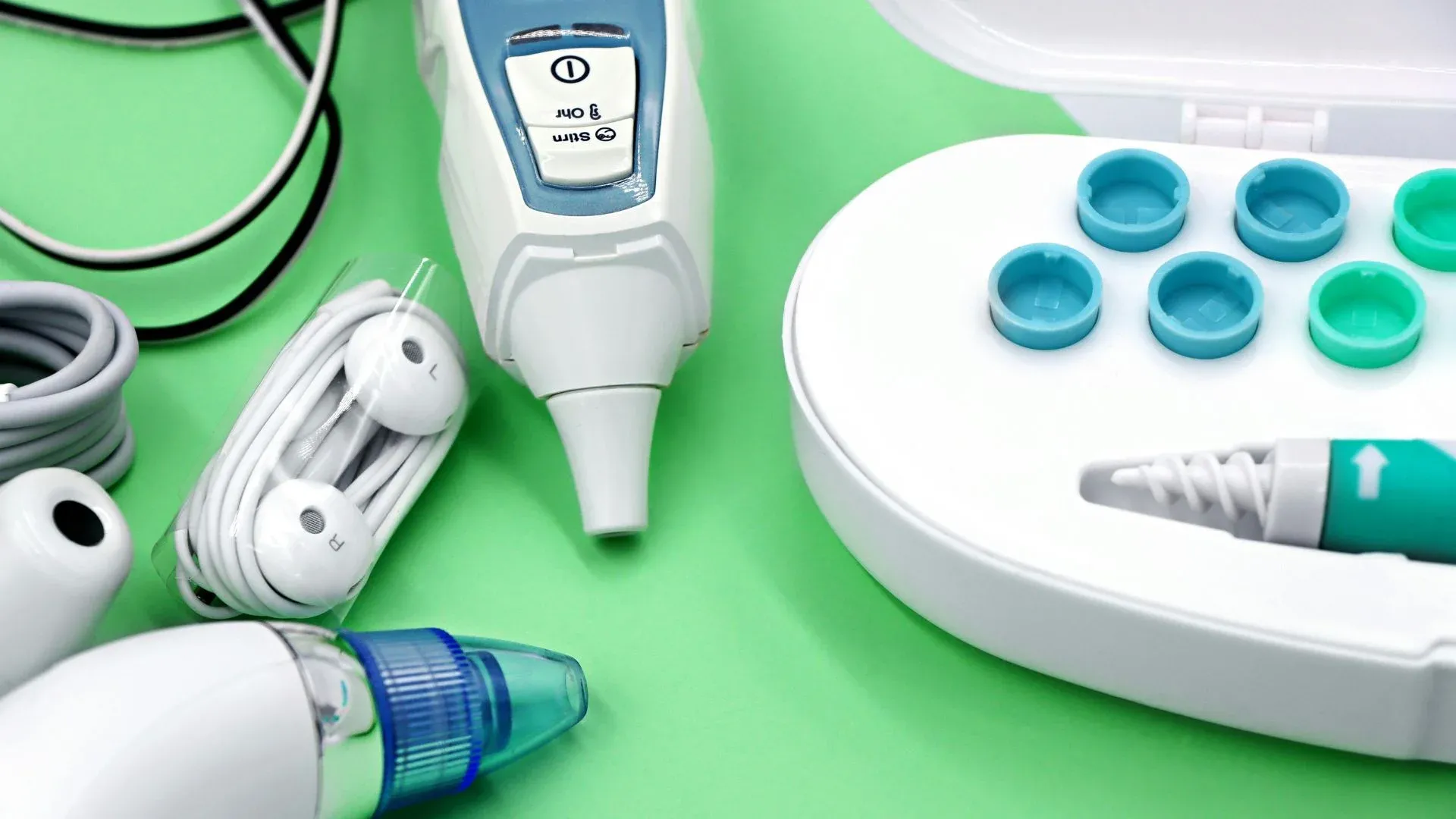
What are Some Common Challenges with Traditional Booths
Before we get to the advancements in tech, we need to understand where our starting point is. Tech innovation is ushered forward by challenges and the need to overcome them. Innovation means nothing if we don’t know what it solves or makes better. Many of the old booths remain, and they present a recurring set of challenges.
- Ventilation noise: Conventional air systems often exceed acceptable sound thresholds, compromising test integrity. Or you can skip the air intake and make the booth really unpleasant to be inside. This would add stress to the examiner or the patient, potentially adding “noise” to the system and the measurements.
- Mobility constraints: Most booths are bulky, fixed installations, limiting their use in space-constrained facilities or remote settings. For example, a small clinic may avoid adding an audiology department if they do not have enough space for a booth. Especially if this booth is not used daily. There is a solution, and we will cover it soon. Remote settings would mean that patients in rural villages with reduced mobility can’t get access to audiometric healthcare.
- Patient discomfort: Neurodivergent patients, children, or those with anxiety may find enclosed, featureless environments stressful. This can cause an episode of claustrophobia. At that point, the testing is ruined and the results can not be trusted.
- Integration gaps: Outdated booths are often not equipped for digital workflows, remote diagnostics, or EMR compatibility, reducing clinical efficiency. Better efficiency means more time for the medical staff to spend on taking care of their patients.
The need for next-generation audiometric booths is a clinical imperative. Booth technology must support both acoustic precision and patient-centred care, and ease the workload on the medical staff.
Quieter Than Ever: Structural and Acoustic Innovations
Solving complex health issues pushes diagnostics to improve. This improvement can only be possible if the tools used for diagnosis evolve as well. In this sense, booths are the tools. Since measurements are very sensitive, modern booths have to deliver greater sound isolation, better internal sound behaviour, and improved flexibility.
What are the New Composite Wall Systems
Let’s start with the walls of the booth. The new approach is to have multiple layers stacked on top of one another, each with a specific function. Manufacturers are now using multi-layered panels that combine:
- Mass-loaded layers to block airborne sound. The heavier the wall, the less it wants to move (transmit sound).
- Damping materials (like viscoelastic polymers) are used to break up vibrations. They act like springs that absorb the structural noise.
- Absorptive cores (such as mineral wool or acoustic foam) to trap sound energy. These materials convert the sound wave into low-grade heat, ultimately reducing its power.
This “layer sandwich” structure significantly boosts insertion loss (the amount of sound energy lost), especially in the critical frequency range used for hearing tests.
Non-parallel Interior Walls
Instead of flat, opposing walls, newer booths use angled or curved internal surfaces. This prevents standing waves. These direct reflections can exaggerate or cancel certain frequencies, leading to inaccurate audiometric data. The goal of the curved or angled walls is to improve the internal clarity so test tones are heard without distortion.
Curved or angled walls… does that mean that there is less space in the booth, or are the booths bigger?
- Angled walls slightly reduce the uniform usable floor area inside the booth.
- Slightly curved walls can make the corners less usable for certain placements (chairs, equipment).
- This is usually a minor compromise and still well within the comfort and accessibility needs of both patients and clinicians.
- If there is not enough space, the manufacturer may choose to sacrifice a small amount of internal booth volume for the acoustic benefit.
Do Floating Floors Come With Better Vibration Isolation
Advanced booths levitate. Well… not really, but they are disconnected or decoupled from the floor to avoid structural noise. This is an issue in high-foot-traffic buildings or ones with nearby heavy machinery. The isolation is achieved by suspending the booth on a floating base, usually made from rubber or spring isolators like our Vibro EP.
This matters a lot in real-world settings like:
- Multi-storey buildings where footsteps, carts, and elevators generate low-frequency rumble
- Clinics near roads, mechanical rooms, or industrial equipment
- Any site where ambient structural noise could interfere with hearing assessments.
Even inaudible structural vibrations can affect results. These tests rely on extremely low signal-to-noise ratios, and mechanical noise bleeding into the booth can produce false negatives or misreadings.
Real-world Sound Reduction: 45+ dB Insertion Loss at 500 Hz
Top-of-the-line booths now achieve insertion loss levels of 45 dB or more at 500 Hz, and even higher at mid and high frequencies. This means common environmental sounds like hallway conversations or passing traffic are effectively inaudible inside, enabling precision testing even in busy urban clinics.
What does “45 dB insertion loss at 500 Hz” mean? It means that when an external sound at 500 Hz (such as speech, footsteps, or urban noise) hits the booth, its energy is reduced by 45 dB by the time it reaches the inside. To put that into perspective:
- A 60 dB conversation outside the booth would register at 15 dB or less inside, well below the ambient noise thresholds required for audiometric testing.
- At mid to high frequencies (1,000–4,000 Hz), premium booths often provide 50–60+ dB attenuation, making external sounds virtually inaudible.
500 Hz is a key benchmark because it is part of the speech frequency range and one of the most challenging to isolate. Many environmental noises fall within this low-to-mid frequency band.
Certified Performance: ANSI S3.1 and ISO 8253
These innovations are designed to satisfy or even go beyond world-renowned standards, such as:
- ANSI S3.1-1999 (R2018) for maximum ambient noise limits during hearing tests
- ISO 8253-1:2010 for test room acoustics and audiometric procedures
Manufacturers typically provide third-party lab data to certify compliance, making the booths suitable for use in clinical and research-grade settings.
Can Booths Be Modular and Mobile
Modularity and mobility are more than nice-to-haves; they’re becoming standard expectations. Hearing care expands into schools, mobile clinics, and underserved communities. The model is changing fast.
Rapid-assembly Structures for Fast Deployment
Modern booths now arrive as pre-fabricated components with plug-and-play assembly. This reduces on-site construction time, eliminates the need for structural modifications, and supports future relocations or upgrades.
- Ideal for expanding clinics, pop-up testing centres, or temporary retrofits during hospital renovations.
- Panels are precision-engineered for airtight acoustic fit and rapid tool-free connections.
What happens when audiometric mobile booths get installed in an environment with impact or airborne noise, like a busy town centre? That is a problem, because often mobile booths sacrifice mass and can’t have a floating floor system upon which to be installed. As we said, the measurements are very sensitive. There is a solution!
Modern booths integrate floating floors within their structural base, using pre-installed isolation materials like:
- Rubber composite layers
- Spring isolators
- Viscoelastic dampers embedded in the support frame
These form a kind of "micro-floating floor" within the booth. It is compact enough for portability, but still effective for blocking structure-borne noise.

Can Portable Screening Booths Make Audiology Mobile
Health providers increasingly need transportable audiology solutions. They find application for them in school screenings, rural outreach, or on-site corporate wellness testing.
- Compact booths are now mounted in vans, mobile labs, or modular containers, making hearing tests possible in remote or temporary settings.
- Integrated shock and vibration dampening ensures accuracy, even when testing is conducted in mobile conditions.
Typically, older populations tend to live in the outskirts and rural parts of society. If you think about a mountain village with 50 people, rarely would you imagine them to be 20-30-year-olds.
Mobility here means accessibility and early diagnosis, which makes treatment possible and lowers the discomfort of having to live with an impairment. Rural patients can access urban-grade diagnostics without travelling.
Real-World Modularity and Flexibility
The demand for audiometric environments that can adapt to limited space or shifting use cases is growing. Manufacturers have begun focusing on modular construction, compact footprints, and tool-free installation. These features make it possible to implement high-performance booths in clinics undergoing renovation, hospitals that can’t spare structural change, or even within multipurpose rooms in schools or universities.
Some of the more forward-thinking solutions now achieve acoustic ratings exceeding 45 dB insertion loss, while still allowing for easy disassembly and reinstallation. One example is DECIBEL’s S-Series, which reflects this new generation of plug-and-play audiometry booths.
Though compact, it maintains rigorous sound isolation standards and can be customised in terms of ventilation, lighting, and interior fit-out, all while prioritising patient comfort and clinician access.
This design ethos of clinical precision without spatial rigidity supports everything from facility upgrades to mobile screening programmes. It represents a tangible shift in how and where audiological care is delivered.
Ventilation and Comfort: No More Trade-offs
In the past, having complete silence meant poor air quality. See, ventilation systems were major weak points because they introduced low-frequency noise or hum into the audiometric booths. That is no longer necessary. Modern booths use very clever techniques to solve that.
HVACs are integrated with labyrinth-like ductwork and acoustic silencers. This technology allows the AC unit to function at a normal rate while also suppressing the noise. When the noise has a direct path towards the booth, there is hardly anything to stop it. These new systems interrupt it with geometry and absorbing materials so that air can flow freely, but noise is greatly mitigated.
This way, air circulation has no way of influencing recordings in a negative way. Advanced designs now offer:
- Precision airflow control: Variable-speed, low-noise fans allow clinicians to set airflow levels appropriate to the room size and patient type, without breaching ANSI or ISO noise thresholds.
- Temperature regulation: Integrated thermal systems maintain comfort over long testing periods. This is useful for multi-patient sessions or booths lacking external climate control.
- HEPA filtration options: In response to post-COVID infection control standards, some booths include HEPA or UV-filtered ventilation for added hygiene, especially in paediatric or immunocompromised settings.
- Human-centred interiors: Many booths now consider the sensory experience of children or neurodivergent individuals. Adjustable LED lighting, soft interior finishes, and ergonomic seating help reduce anxiety, fidgeting, and test interruptions.
Do Smart Booths Allow Digital Integration and Remote Testing
Audiometric booths have a reason to adopt smart technology. By having a digital presence, booths provide better access for both clinicians and patients, improved accuracy, and support new methods of medical care. It is so much more convenient when you consider:
- Built-in connectivity: Modern booths come equipped with USB ports, Ethernet access, and secure Wi-Fi modules, allowing real-time uploads of test data directly into Electronic Medical Records (EMR). This minimises transcription errors and accelerates the diagnostic workflow.
- Support for tele-audiology: With growing demand for remote services, booths are now built to interface with remote-controlled audiometers, video conferencing tools, and cloud-based diagnostic platforms. Clinics can test patients in one city while the specialist operates from another.
- AI-assisted behavioural tracking: Particularly useful in paediatric audiology, booths can now integrate interior webcams and AI software that track facial expressions, eye movement, and physical gestures during tests. This helps clinicians detect non-verbal cues of understanding, confusion, or fatigue.
- Acoustic self-analysis for calibration verification: Some advanced setups now use internal microphones to detect and log the acoustic characteristics of the booth before each test session. This acts as a passive self-check, ensuring that booth integrity hasn’t been compromised.
A useful example might explain why these technologies are important. A six-year-old child is being tested for hearing loss. They’re shy, easily distracted, and struggle to express discomfort.
With legacy booths, the clinician might rely solely on yes/no responses or hand signals to judge the child’s hearing. But subtle signs will be lost. Things like confusion, stress, and boredom can easily be missed. In a smart audiometric booth, the process becomes far more adaptive:
- AI-assisted behavioural tracking monitors the child’s eye movement and facial expressions throughout the session. When the child frowns or glances repeatedly in one direction, the system alerts the clinician that they may be distracted, uncomfortable, or fatigued.
- Meanwhile, the clinician running the session is connected remotely via tele-audiology, allowing the family to access a paediatric audiology specialist from a top hospital, even though they’re sitting in a rural clinic. There’s no need for a long drive or multiple appointments.
- The test results are automatically uploaded to the EMR, so there’s no waiting for transcription, no risk of miscommunication, and faster referrals if needed.
- Acoustic self-analysis runs quietly in the background before the session, verifying that the booth is performing to standard. The parents don’t know it’s happening, but it ensures the data collected about their child’s hearing is accurate and trustworthy.
What is the Role of Personalisation and Inclusive Design
There is a natural step-by-step logic to improving healthcare. First, more people need to have access to quality medical services. More people means more variety. More variety moves clinical help further away from a one-size-fits-all approach. This would require a new way of thinking. A personalised approach, if you will.
New audiometric booth designs are embracing accessibility, sensory comfort, and user diversity. Every patient, regardless of age, ability, or neurotype, should be able to undergo accurate testing without unnecessary discomfort or stress.
Accessibility for All Body Types and Mobility Needs
Modern booths are now being engineered with adjustable layouts to accommodate wheelchairs, walkers, and mobility aids. This includes:
- Wider entry doors with low-threshold or smooth, gapless floors.
- Height-adjustable seating and equipment stands
- Sufficient internal clearance for manoeuvrability
Neurodivergent-Friendly Features
Patients with autism, ADHD, or sensory processing sensitivities are particularly affected by the sensory environment. Booths are now being built with low-stimulation interiors that include:
- Soft, matte finishes to avoid visual overstimulation
- Adjustable, dimmable LED lighting to accommodate light sensitivity
- Noise-free ventilation to eliminate low-frequency hums that can cause discomfort
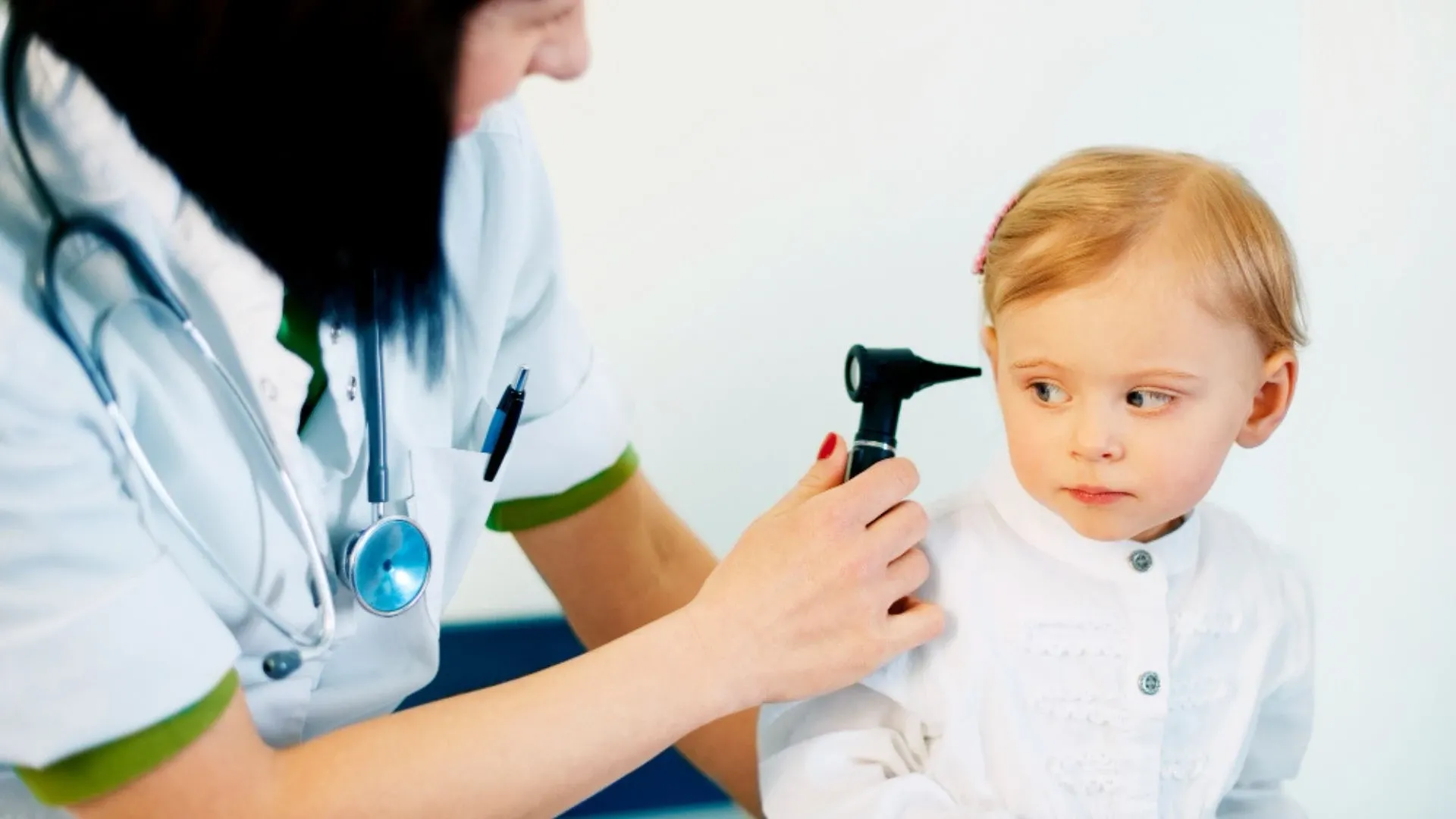
Multi-User and Switchable Protocols
Some audiometric booths are beginning to support switchable acoustic settings via integrated digital systems. This is another way that the variety of patient profiles affects the push for new technology. For instance:
- Adult vs child test protocols with pre-set lighting, audio prompts, and seat positions
- Language-specific voice instructions for multilingual patient populations
- Pre-programmed “quiet intro” modes to ease patients into the space gradually
What is the most inadequate phrase that one can use to describe audiometric booths? We vote for insulated boxes. Because this is so far from reality. These diagnostic tools are becoming smart, mobile, and deeply patient-centred. Hearing loss rates are increasing for many reasons, some of which are ageing populations and more exposure to loud environments. As an answer, booths are becoming more accessible and tech-integrated.
Backed by global health data, advancing materials science, and rising telehealth adoption, the future of audiometric testing is one of precision, personalisation, and seamless integration into modern medical care.
If you need an audiometric booth designed and installed at a medical facility, get in touch, and we will discuss the best approach.
